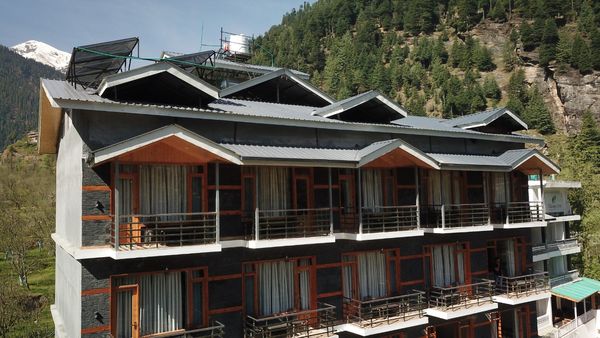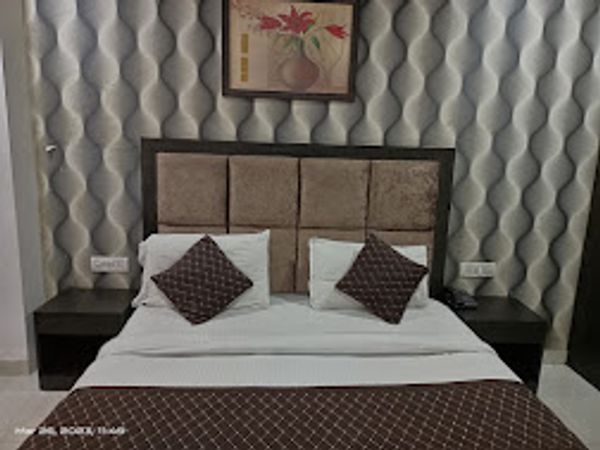Exploring India Through Its Traditional Attire
 Rohit Sen
02 Jul, 2024
10 mins read
576
Rohit Sen
02 Jul, 2024
10 mins read
576

India is a land of diverse cultures, languages, and traditions, each with its unique and rich heritage. One of the most fascinating aspects of this cultural diversity is the array of traditional attire, each piece reflecting the history and artistry of its region. This article delves into the traditional prints from different parts of India, showcasing the intricate designs and craftsmanship that define Indian textiles. We will explore the Ajrakh from Gujarat, Bagru print from Rajasthan, Kalamkari from Andhra Pradesh, Bagh from Madhya Pradesh, and Ikat from Odisha.
Different Prints from Different Parts of India
India's traditional prints are more than just designs on fabric; they are a tapestry of stories, traditions, and techniques passed down through generations. Each print is distinct, with its own set of motifs, colors, and methods of creation that are deeply rooted in the region's history and culture. Let's embark on a journey through some of the most iconic traditional prints of India.
Ajrakh from Gujarat
Ajrakh is a block-printing technique that has its origins in the Sindh region but has flourished in the Kutch district of Gujarat. This ancient art form is characterized by its complex geometric and floral patterns, primarily in shades of blue, red, black, and white. The process of creating Ajrakh is labor-intensive and involves several stages, including washing, dyeing, printing, and drying.
Ajrakh printing is not just about aesthetics; it holds cultural significance. The motifs used in Ajrakh prints are inspired by nature and the cosmos, reflecting a deep connection to the earth and the universe. The intricate patterns and natural dyes used in Ajrakh make each piece unique and timeless.
For those looking to incorporate this beautiful art form into their wardrobe, brands like Raworiya offer stunning collections of Ajrakh prints. Their dedication to preserving traditional crafts while infusing modern aesthetics makes their pieces a perfect blend of tradition and contemporary style.
Bagru Print from Rajasthan
Bagru print is a traditional hand-block printing technique that originated in the Bagru village of Rajasthan. Known for its earthy colors and intricate patterns, Bagru printing uses natural dyes made from indigo, turmeric, and pomegranate rind, among other ingredients. The process involves several steps, including preparing the fabric, making the dye, printing the fabric, and finally washing and drying it.
The motifs in Bagru prints often include floral and geometric patterns, which are inspired by the natural surroundings of the region. This printing technique is not only a reflection of Rajasthan's rich cultural heritage but also a testament to the skill and craftsmanship of its artisans.
Raworiya’s collection also features beautiful Bagru prints, showcasing their commitment to promoting traditional Indian crafts. By incorporating these prints into contemporary designs, Raworiya helps keep the art of Bagru printing alive while offering fashion-forward pieces.
Kalamkari from Andhra Pradesh
Kalamkari is a type of hand-painted or block-printed cotton textile that originated in the state of Andhra Pradesh. The word "Kalamkari" is derived from the Persian words "kalam" (pen) and "kari" (craftsmanship), highlighting the detailed hand-painting technique used to create these intricate designs.
Kalamkari art involves two distinctive styles: the Srikalahasti style, which is entirely hand-painted using a pen, and the Machilipatnam style, which combines hand-painting and block printing. The designs often depict mythological scenes, floral patterns, and intricate borders, all rendered in natural dyes.
Creating a piece of Kalamkari involves several steps, including preparing the fabric, sketching the design, applying the dyes, and washing the fabric to set the colors. The result is a vibrant and detailed piece of textile art that tells a story through its motifs and patterns.
Bagh from Madhya Pradesh
Bagh print is a traditional hand-block printing technique from the Bagh village in Madhya Pradesh. This art form is known for its intricate geometric and floral patterns, which are printed using natural dyes made from plants, fruits, and minerals. The distinctive red and black colors used in Bagh prints are derived from alizarin and iron rust, respectively.
The process of creating Bagh prints involves multiple stages, including washing the fabric, treating it with a mixture of goat dung and castor oil, printing the design, and then dyeing the fabric. The result is a vibrant and durable textile that reflects the rich cultural heritage of Madhya Pradesh.
Bagh prints are not only popular in traditional Indian attire but are also being incorporated into contemporary fashion, home decor, and accessories. This adaptability ensures that the art form continues to thrive in modern times.
Ikat from Odisha
Ikat is a dyeing technique used to create patterns on textiles, and it is particularly prominent in the state of Odisha. The term "ikat" comes from the Malay-Indonesian word "mengikat," which means to tie or bind. This refers to the process of tying and dyeing the threads before weaving them into fabric.
In Odisha, ikat is known as "Bandha" and is used to create intricate designs with vibrant colors. The unique aspect of ikat is that the patterns are dyed into the threads themselves, rather than being printed or painted on the fabric. This results in a characteristic blurriness in the patterns, which adds to the charm and uniqueness of ikat textiles.
The weaving process of ikat is complex and requires great skill and precision. The threads are tied in specific patterns, dyed, and then woven to create the final design. This meticulous process ensures that each piece of ikat fabric is a work of art, with patterns that are both intricate and distinctive.
Ikat from Odisha is highly prized for its beauty and craftsmanship, and it is used in a variety of traditional and contemporary garments. The vibrant colors and intricate designs make ikat a popular choice for sarees, dupattas, and other traditional attire, as well as for modern fashion and home decor.
Conclusion
India's traditional prints are a testament to the country's rich cultural heritage and the incredible skill of its artisans. From the complex geometric patterns of Ajrakh to the intricate hand-painting of Kalamkari, each print tells a story and reflects the unique traditions of its region. Brands like Raworiya are playing a crucial role in preserving and promoting these traditional crafts, ensuring that they continue to thrive in the modern world.
By exploring and embracing these traditional prints, we not only celebrate India's cultural diversity but also support the artisans who keep these ancient art forms alive. Whether you're looking to add a touch of tradition to your wardrobe or simply appreciate the beauty of these prints, there is no better way to explore India than through its traditional attire.
Written By:
Rohit Sen



Hotels at your convenience
Now choose your stay according to your preference. From finding a place for your dream destination or a mere weekend getaway to business accommodations or brief stay, we have got you covered. Explore hotels as per your mood.


